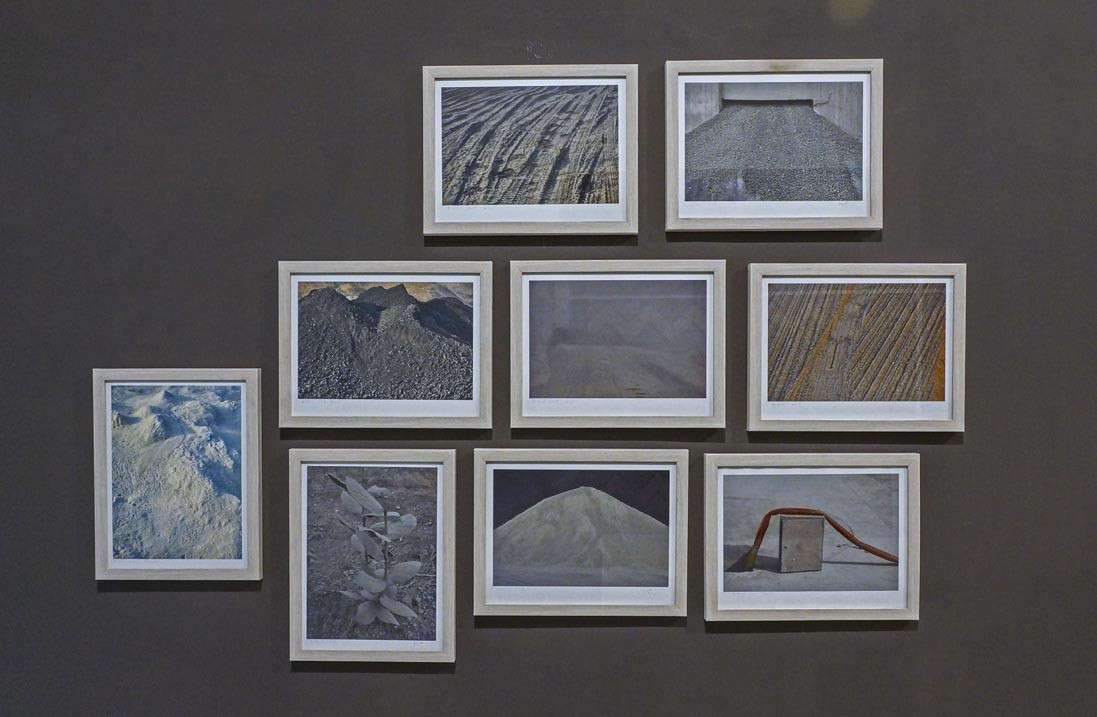
An artists’ residency in Khushab comprising seven major artists turned out to be a major moment for the development of art and architecture in the country

Pioneer Art Residency, curated by Canvas Gallery, represented seven artists this year. The curator Sameera Raja diligently brought together a brilliant group of internationally acclaimed creative minds. These included Hamra Abbas, David Alesworth, Jahanzeb Haroon, Quddus Mirza, Huma Mulji, Seema Nusrat and Nausheen Saeed.
One can only imagine how prolific these seven artists are to have worked together for fifteen days and nights and produced this kind of work. Their experience and artwork, when shared with the public, becomes an important moment for the development of art and architecture in this country.
After viewing the works and the in-process digital slide show projection, the final body of work seems unique and breath-taking. More significant was the astounding energy, time, and intellect that was shared between these artists while they were in the process of executing their artworks.
Astounding in its breadth, the work made it impossible for anyone visiting the site in Khushab to view it, stay for only a few hours and then leave. One could even spend days there and it would not be enough. The documentation of all the artists by Jahanzeb Haroon -- in trying to understand the experience involving big boulders, high tech machinery, acres of wide-spread land laden in coal, cement, labour and so much more -- was an incredible thing to watch.
A good example of the scale and textures in which the artists were operating is David Alesworth’s site-specific drawings and later their aerial photographic documentation. The drawings were made in a bed of bituminous coal and limestone dust which was approximately 310 x 250ft. The motifs were the fossil record of the Carboniferous era and represented some of the species of plants that laid down these fossil fuel reserves up to 350 million years ago. Each site-specific drawing was photographed at 4:30pm every day for 15 days. The actual work on-site seemed like huge velvet monotone carpets with floral impressions.
Monotones and monochromatic grey was further explored by Huma Mulji. One could only wish that her on-site large scale creations could be preserved for life. However, we only saw the prints of her work. These prints were awe-inspiring and sensitive, even reminiscent of the Spanish legend Antonio Tapies. The use of red, as she explains, is because the colour emerges only when enough time is spent with the gray, creating many connotations on various intellectually stimulating levels. Mulji worked on a very large scale, but when photographed one could only see the intricacies of the bigger image. One could understand what she meant when she explained, "walking around the plant slowly took away the big things and revealed the small things."
Where Mulji focused on the softer and fragile quality in grains of sand and cement, Nausheen Saeed made use of limestone and steel itself. Saeed brought the heaviness and sturdiness of the boulders, stones and rocks, all manipulated at the hands of technology. She played with opposites: "lightness" and "weight", and with great dexterity. Almost like a mathematician, she has the ability to calculate the weight, size and proportion of the various materials and technology available to her to create this concrete, magnificent web-like structure of steel, placing an object inside it which seemed like a cloud from afar but really was a heavy stone crushed to dust. Saeed’s intelligence and grip on content and material was outstanding, especially with this towering sculpture, titled ‘Lightness of being’.
Another towering accomplishment was Seema Nusrat’s watchtower that stood within the factory compound, all painted in bright hues with traditional motifs. She explains the incorporation of the watchtower as an architectural element prominent nowadays, while assimilating a local design aesthetic within it. A watchtower, usually uninviting and unappealing, looked like a joyful and happy place, tempting many to go inside and have a look, and maybe sit in it a while.
To sit somewhere happy with your loved ones, amidst a garden with fountains, seems like a scene from bygone days. Hamra Abbas created that very intense nostalgia for all those who have seen the 17th century famous fountain located at the Shalimar Gardens. Abbas made an exact replica of a section from that fountain titled, "Waterfall 2," with an entirely new combination of stones that are quarried in Khushab. She had designed motifs like small hills in zig zag formations, with wonderful earthy tones of stones. Their layout area seemed like a map designed on Abbas’s artwork, delighting and inspiring all those who stood in Khushab’s hilly landscape.